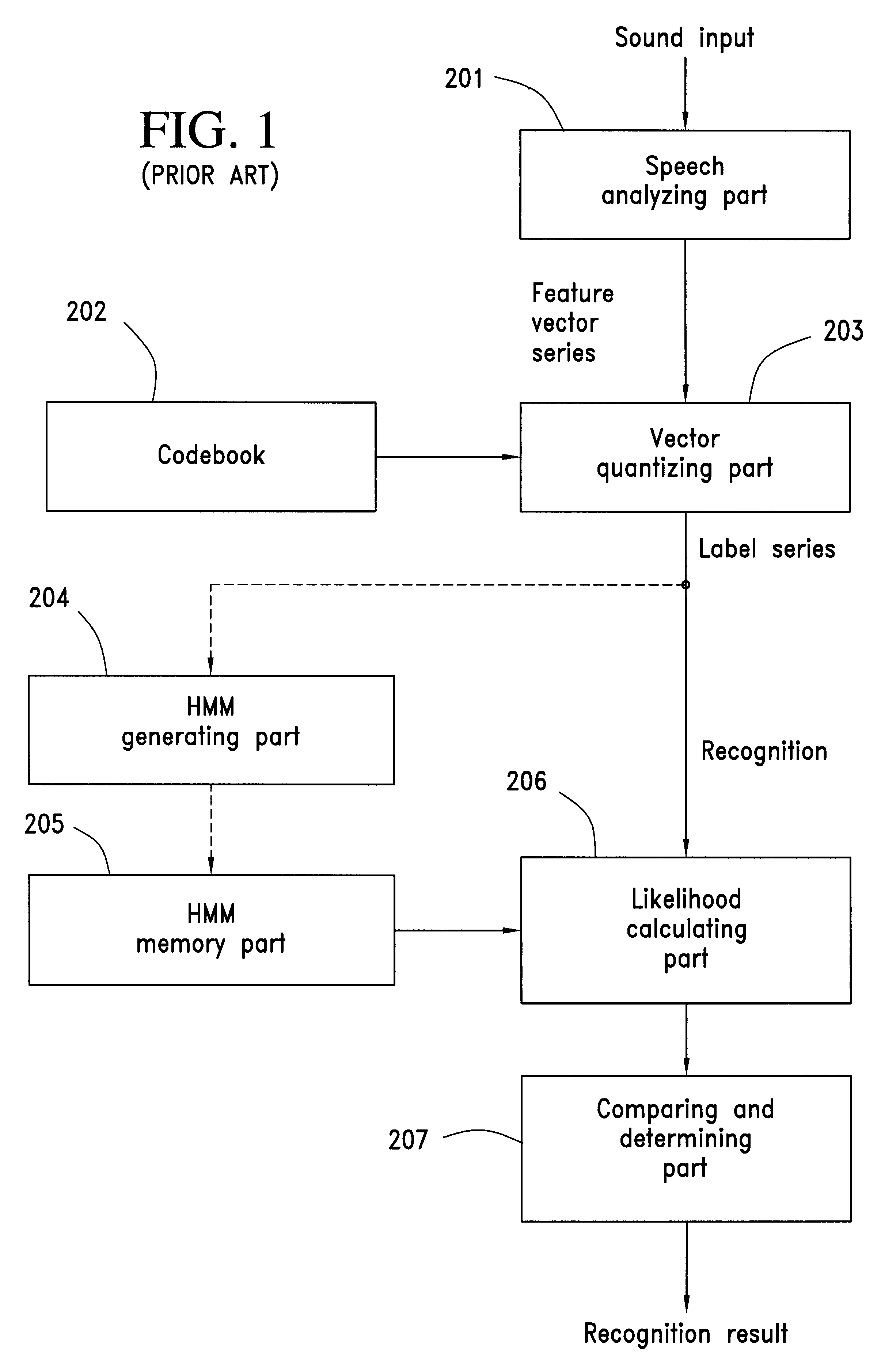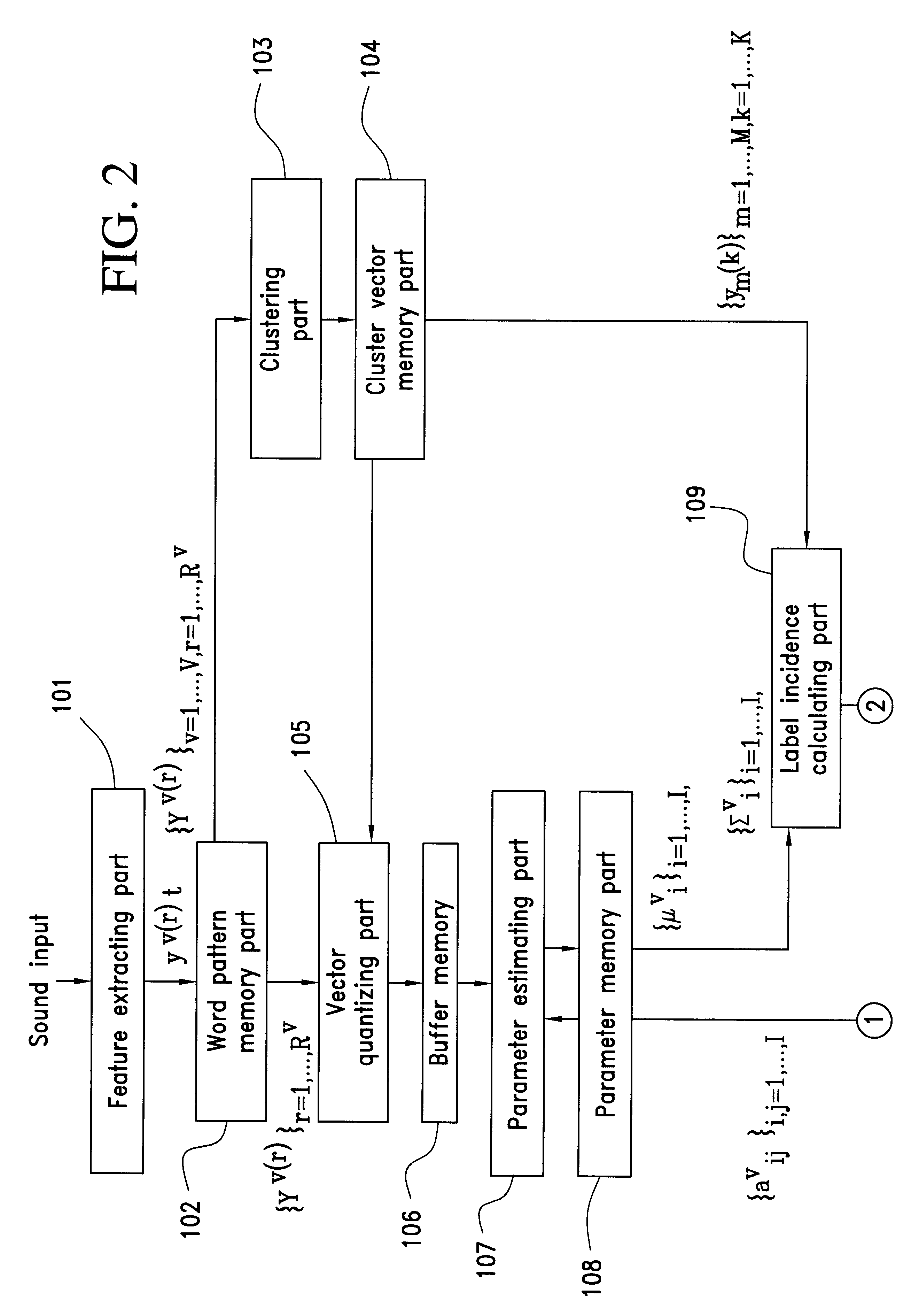Combined quantized and continuous feature vector HMM approach to speech recognition
a feature vector and feature vector technology, applied in the field of combined quantized and continuous feature vector hmm approach to speech recognition, can solve the problems of adversely affecting recognition accuracy, no one can fundamentally solve the problem, and inferior recognition accuracy
- Summary
- Abstract
- Description
- Claims
- Application Information
AI Technical Summary
Problems solved by technology
Method used
Image
Examples
Embodiment Construction
An embodiment of the present invention is described below by referring to the drawings.
The definition of the symbols used hereinbelow are first described. For simplicity, states q.sub.i, q.sub.j and the like are indicated simply as i, j and the like to avoid misunderstanding. As for a model learning, it is described for a word v, and a subscript v is gadded, when identification is required, in the upper right portion of a parameter, but omitted in general circumstances. The symbols are described below.
i=1, 2, . . . , I+1: State number i
[a.sub.ij ]: Transition matrix
a.sub.ij : Transition probability from state i to state j
r: Training pattern number (r=1, . . . , R) to word v
y.sup.(r) (t): Observation vector in the frame number t of the training pattern r
o.sup.(r) (t): Observation label in the frame number t of the training pattern
b.sub.i (y.sup.(r) ((t)): Probability density in the state i of the vector y.sup.(r) (t) of the frame t of the training pattern r
b.sub.i (o.sup.(r) (t)): In...
PUM
 Login to View More
Login to View More Abstract
Description
Claims
Application Information
 Login to View More
Login to View More - R&D
- Intellectual Property
- Life Sciences
- Materials
- Tech Scout
- Unparalleled Data Quality
- Higher Quality Content
- 60% Fewer Hallucinations
Browse by: Latest US Patents, China's latest patents, Technical Efficacy Thesaurus, Application Domain, Technology Topic, Popular Technical Reports.
© 2025 PatSnap. All rights reserved.Legal|Privacy policy|Modern Slavery Act Transparency Statement|Sitemap|About US| Contact US: help@patsnap.com



